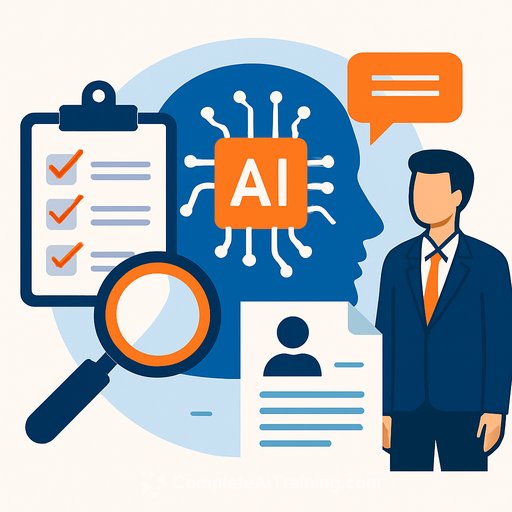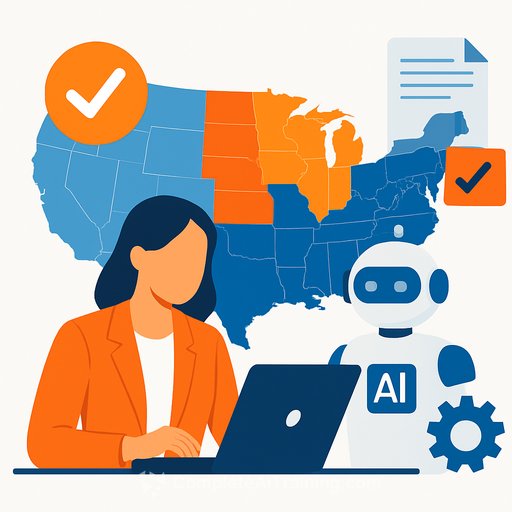Executives Fear AI Obsolescence: An HR Playbook That Reduces Panic and Builds Capability
AI anxiety is real at the top. If 40% of executives wish they'd chosen a different path, your workforce feels it too. Fear spreads fast. HR can turn it into momentum.
Your job: reduce threat, increase clarity, and create visible wins. Treat AI less like a scary technology problem and more like a skills, roles, and trust problem.
Why leaders feel replaceable
- Shifting value: judgment, speed, and communication are now augmented by systems.
- Opaque tools: leaders don't know what's possible, so they assume the worst.
- Missed learning loops: no space to test, fail, and adapt in low-risk settings.
What HR should do this quarter
- Run a role-by-task audit for executive and manager jobs. Label tasks: automate, co-pilot, keep human.
- Stand up a clear AI use policy (privacy, IP, security, bias checks, human-in-the-loop).
- Launch a leader-focused AI literacy sprint (4-6 weeks) with hands-on workflows, not theory.
- Create an "AI Office Hours" channel for quick help and shared playbooks.
- Pick two business-critical use cases and measure time saved and error rates.
90-day playbook
- Days 1-30: Policy, risk guardrails, and pilot cohorts. Baseline current process times. Identify 10 repeatable executive workflows (briefing prep, market scans, board memo drafts, scenario planning).
- Days 31-60: Build co-pilots into those workflows. Pair an analyst with each exec. Track time saved and quality outcomes.
- Days 61-90: Scale what works. Update job descriptions and competencies. Tie skills to incentives.
Executive skills to develop now
- Prompt writing and review standards (structure, constraints, tone, source control).
- Data reasoning (assumptions, sampling bias, sanity checks).
- Workflow automation thinking (trigger, action, review, log).
- Model limitations and risk flags (hallucinations, privacy, IP).
- Storytelling with AI outputs (turn drafts into decisions with clear trade-offs).
Policy checklist (fast, clear, enforceable)
- Approved tools and access levels; no shadow tools with sensitive data.
- Red-lines: PII, client secrets, proprietary code or strategy.
- Source tracking: keep prompts, versions, and citations.
- Bias and quality reviews on high-stakes outputs.
- Human accountability: who signs off, every time.
Redesign roles, not just tasks
Executives aren't being replaced; their time is being reallocated. Shift from doing to directing, from manual review to system oversight, from first draft to final judgment.
- Update job architecture: add AI literacy and workflow design to core competencies.
- Introduce skill-based pay signals for AI-enabled productivity.
- Create "operator" roles (analyst or chief of staff) to build and maintain executive co-pilots.
Communication that lowers fear
- Say what AI will and will not do in your company this year. Be specific.
- Show before/after examples of exec workflows with time saved and error reductions.
- Celebrate teams that share failures and fixes. Normalize iteration.
Metrics that matter
- Adoption: % of leaders using approved tools weekly.
- Efficiency: median minutes saved per core workflow.
- Quality: revision counts, error rates, compliance flags.
- Talent: internal mobility into AI-adjacent roles; training completion and assessment scores.
- Risk: number of policy exceptions and remediation time.
Common objections you can answer
- "AI will replace me." It replaces parts of your job. You choose which parts. Keep judgment and accountability. Offload the grunt work.
- "Outputs aren't reliable." That's why we set review steps, data rules, and a clear sign-off. Quality rises with structure.
- "We don't have time." Two pilot workflows can return the time for the rest. Start where the pain is highest.
Further reading
Build capability fast
If you want structured, job-focused upskilling for leaders and HR teams, explore these resources:
Fear is a signal. Use it to cut busywork, grow skills, and make leaders more effective than ever. That's the work.
Your membership also unlocks:






